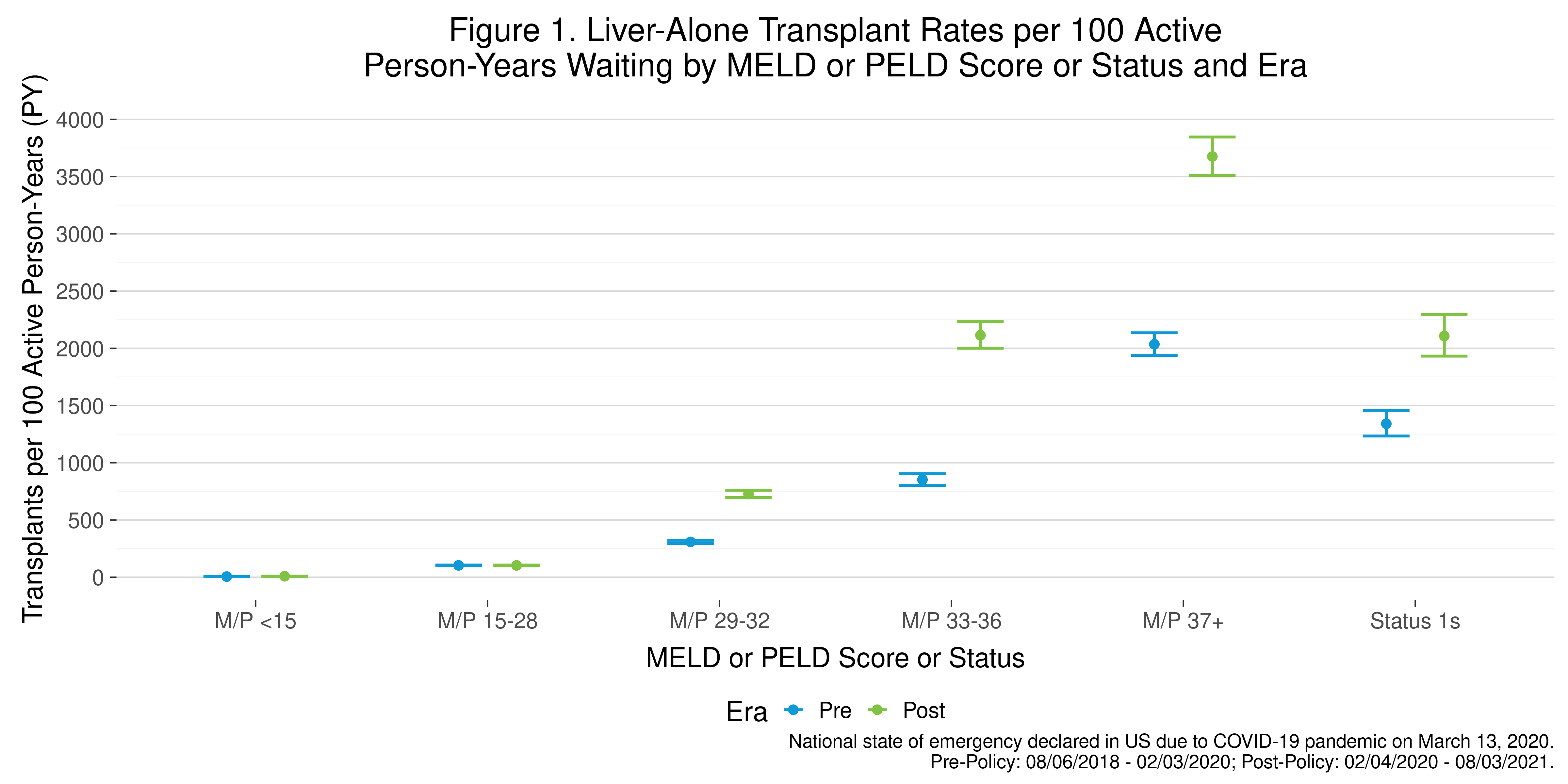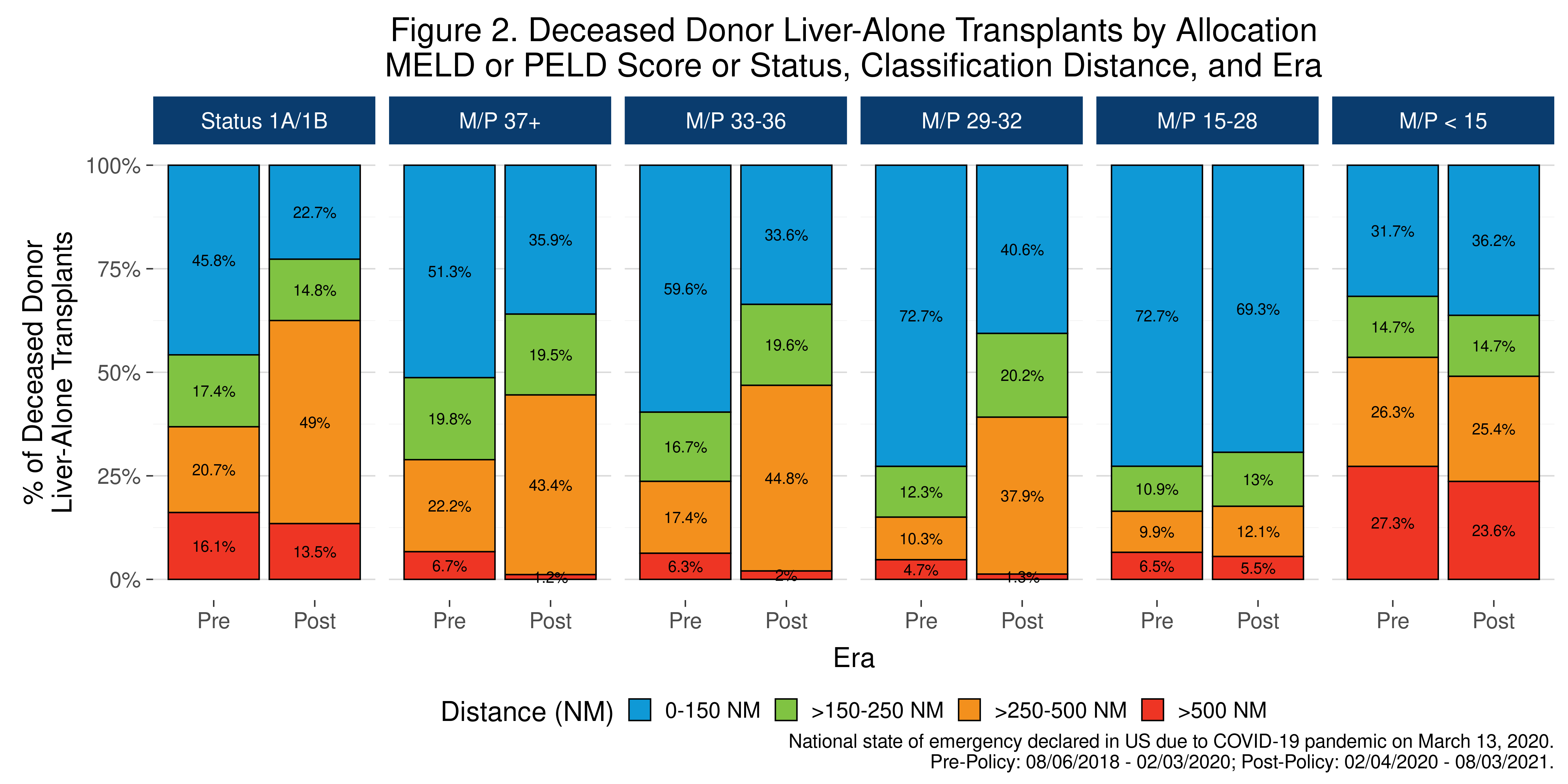18 Month Review of Liver Acuity Circles Allocation
1United Network for Organ Sharing, Richmond, VA, 2Baylor University Medical Center, Dallas, TX, 3University of Washington, Seattle, WA, 4University of Colorado, Aurora, CO
Meeting: 2022 American Transplant Congress
Abstract number: 316
Keywords: Liver, Lung transplantation, Waiting lists
Topic: Clinical Science » Liver » 60 - Liver: MELD Allocation*
Session Information
Session Name: MELD Allocation and Large Data
Session Type: Rapid Fire Oral Abstract
Date: Monday, June 6, 2022
Session Time: 5:30pm-7:00pm
 Presentation Time: 5:40pm-5:50pm
Presentation Time: 5:40pm-5:50pm
Location: Hynes Room 313
*Purpose: Acuity circles (AC) allocation was implemented on 2/4/2020 with a goal of removing DSA and region from liver allocation and broadening the distribution of livers, particularly for highly medically urgent candidates.
*Methods: OPTN waitlist and transplant data was analyzed 18 months pre- (8/6/2018-2/3/2020) and post- (2/4/2020-8/3/2021) AC implementation.
*Results: Post-policy, there were 448 more adult (age 18+ at listing) and 83 less pediatric (<18 at listing) waitlist additions, 570 more adult (age 18+ at transplant) and 4 less pediatric (<18 at transplant) deceased donor liver-alone transplants, and 121 less adult and 12 less pediatric removals for death or too sick. Transplant rates significantly increased overall post-policy, notably in the most medically urgent groups (Figure 1). The national median transplant score for adults remained unchanged at 28 and decreased from 35 to 30 for pediatric transplant recipients, likely due to the increased number of adolescents (age 12-17) transplanted at MELD scores under 29. There was a noticeable shift in the distribution of distance between donor hospital and transplant program, particularly for the most medically urgent groups where larger proportions of livers are coming from 250-500 NMs (Figure 2). Despite this change, median cold ischemia time increased only 11 minutes for adult recipients and 33 minutes for pediatric recipients post-policy. One year post transplant patient survival decreased from 94% pre-policy to 93% post-policy (p=0.02).
*Conclusions: Broader allocation increased transplant rates and livers are traveling longer distances for candidates with greater medical urgency with little effect on cold ischemia time and post-transplant survival. Unfortunately, AC implementation was followed shortly by COVID-19 making it difficult to parse out COVID-19 from potential policy effects. Metrics will continue to be monitored as more data become available.
To cite this abstract in AMA style:
Foutz J, Noreen S, Cafarella M, Wilk A, Trotter J, Biggins S, Pomposelli J. 18 Month Review of Liver Acuity Circles Allocation [abstract]. Am J Transplant. 2022; 22 (suppl 3). https://atcmeetingabstracts.com/abstract/18-month-review-of-liver-acuity-circles-allocation/. Accessed January 8, 2026.« Back to 2022 American Transplant Congress


